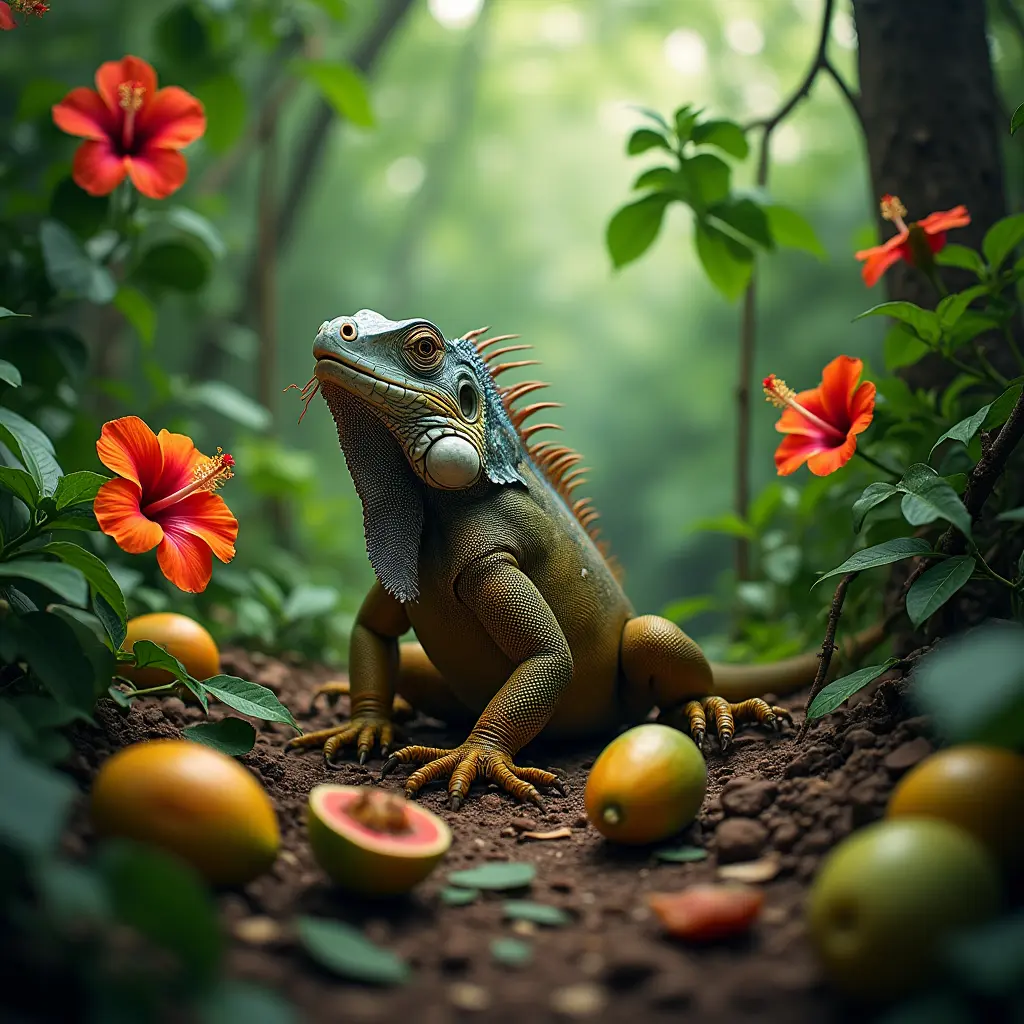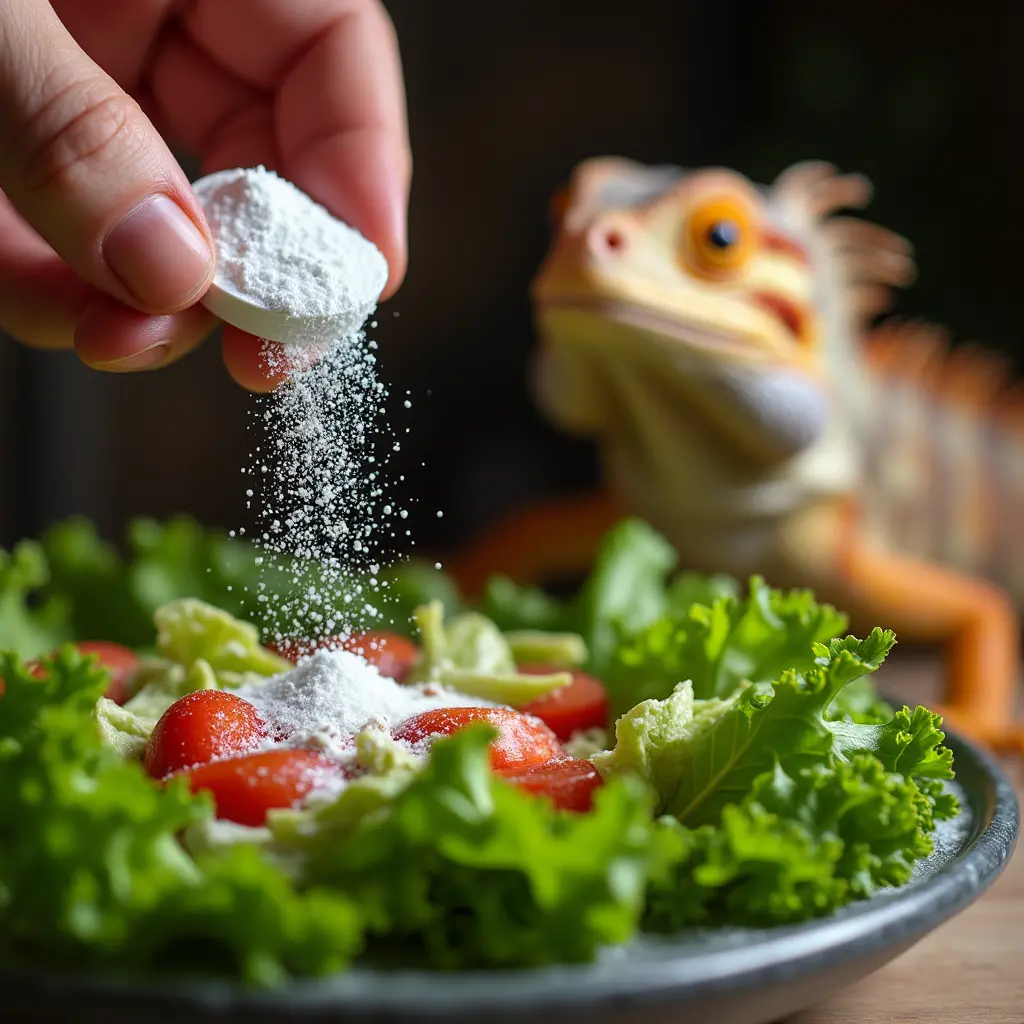The iguana diet is essential for their health and longevity. As herbivores, iguanas have specific dietary needs that must be met to ensure their well-being. Whether you’re a new iguana owner or simply curious about these fascinating reptiles, understanding their diet is key to their happiness and survival. In this comprehensive guide, we’ll delve into the iguana diet, exploring what they eat in the wild and captivity, foods to avoid, feeding tips, and more.
Table of Contents
1. What Do Iguanas Eat in the Wild?
In their natural environment, iguanas are predominantly herbivorous, feasting on the rich vegetation around them. Different iguana species inhabit various regions, influencing their dietary choices.


A. Key Components of a Wild Iguana’s Diet
- Leafy Greens: Wild iguanas consume plants like hibiscus leaves, dandelion greens, and tender tree shoots. These are abundant in their habitats and provide essential nutrients.
- Flowers: Iguanas often munch on flowers like bougainvillea and hibiscus, which offer additional vitamins and hydration.
- Fruits: Seasonal fruits such as figs, bananas, and papayas supplement their diets.
- Insects (Occasionally): While rare, some young iguanas may consume insects for protein during their early growth stages.
B. Regional Diet Variations
- Green Iguanas: Found in tropical forests, their diet is rich in leafy greens and fruits.
- Desert Iguanas: These iguanas adapt to arid environments, feeding on cactus flowers and hardy plants.
- Marine Iguanas: Native to the Galápagos Islands, they primarily consume algae and seaweed.
2. What Do Iguanas Eat in Captivity?
When caring for a pet iguana, replicating its natural diet is crucial. Captive iguanas rely entirely on their owners for nutrition, making it your responsibility to provide balanced and safe meals.
A. The Perfect Iguana Diet
- Leafy Greens (70-80% of Diet):
These should form the foundation of your iguana’s meals. Excellent choices include:- Collard greens
- Mustard greens
- Dandelion greens
- Kale (in moderation)
- Turnip greens
- Vegetables (20-30% of Diet):
Add a variety of vegetables to provide additional nutrients:- Bell peppers
- Squash (butternut, acorn)
- Green beans
- Carrots
- Okra
- Fruits (5-10% of Diet):
Fruits are a treat, not a staple. Offer small portions of:- Mango
- Papaya
- Blueberries
- Watermelon
- Strawberries
B. Food Presentation Tips
- Chop all food into bite-sized pieces to prevent choking.
- Mix vegetables and greens to encourage variety.
- Mist food lightly with water to boost hydration.
3. Foods to Avoid
Not all foods are safe for iguanas. Some can be toxic, while others may cause long-term health issues.
- Animal Protein: Iguanas cannot process animal-based foods like meat, eggs, or dairy. These can lead to kidney damage and other complications.
- High-Oxalate Vegetables: Spinach, rhubarb, and beet greens contain oxalates that interfere with calcium absorption, increasing the risk of Metabolic Bone Disease.
- Citrus Fruits: Oranges, lemons, and grapefruits are too acidic and can harm an iguana’s digestive system.
- Processed Foods: Avoid giving human snacks like chips, bread, or sugary treats.


4. Why Proper Nutrition Matters
A. Health Benefits of a Balanced Diet
A proper diet ensures:
- Strong bones and muscles.
- Healthy skin and vibrant coloration.
- Active behavior and longevity.
B. Risks of Poor Nutrition
Feeding your iguana an unbalanced diet can lead to:
- Metabolic Bone Disease (MBD): A common issue caused by calcium deficiency or an improper calcium-to-phosphorus ratio.
- Obesity: Overfeeding fruits or sugary foods can result in excess weight and inactivity.
- Kidney Failure: Diets high in protein or lacking hydration strain the kidneys.
5. Feeding Schedule and Portion Sizes
Feeding routines and portion sizes vary based on the iguana’s age, size, and activity level.
A. Juvenile Iguanas
- Feed daily with a focus on calcium-rich greens and vegetables.
- Offer slightly larger portions to support rapid growth.
B. Adult Iguanas
- Feed every other day, reducing portions to prevent overeating.
- Maintain variety to meet nutritional needs.
C. Portion Size Guidelines
As a rule of thumb, serve a portion roughly the size of your iguana’s head. This prevents overfeeding while ensuring they receive enough nutrients.
6. Supplements for Optimal Health
Even with a balanced diet, supplements can enhance your iguana’s health. Here’s what to consider:
- Calcium Powder: Sprinkle a phosphorus-free calcium supplement 2-3 times weekly to support bone health.
- Multivitamins: Provide a reptile-safe multivitamin once a week to fill any nutritional gaps.
- UVB Lighting: Proper lighting is essential for calcium absorption and overall health.
7. Tips for Encouraging Healthy Eating Habits
Getting your iguana to eat well can sometimes be challenging. Here are tips to make feeding easier:
- Rotate Greens: Regularly change up the greens and vegetables to keep meals interesting.
- Create a Routine: Feed your iguana at the same time each day to establish a consistent habit.
- Use Attractive Presentation: Arrange colorful fruits and vegetables to stimulate their interest.
- Avoid Overhandling: Stress can affect appetite, so ensure your iguana feels safe and comfortable during feeding.
8. Frequently Asked Questions
Q: Can iguanas eat bananas?
Yes, bananas can be offered occasionally as a treat. However, they should only be given in moderation due to their high sugar content.
Q: Do iguanas need to drink water?
Yes, iguanas require fresh water daily. They may not drink often but will stay hydrated through misted food and water bowls.
Q: Can I feed my iguana dog or cat food?
No, iguanas should never consume dog or cat food. These are high in protein, which iguanas cannot digest properly.


Conclusion
Feeding your iguana correctly is the cornerstone of their health and well-being. By understanding what iguanas eat in the wild and implementing a balanced diet in captivity, you can ensure your pet thrives. Remember to focus on leafy greens, add vegetables and fruits sparingly, and avoid harmful foods. With proper care, your iguana will live a long, healthy, and happy life.
Iguana Diet Iguana Diet Iguana Diet Iguana Diet Iguana Diet Iguana Diet
1 thought on “6 Amazing Facts About Iguana Diets: What Do Iguanas Eat?”